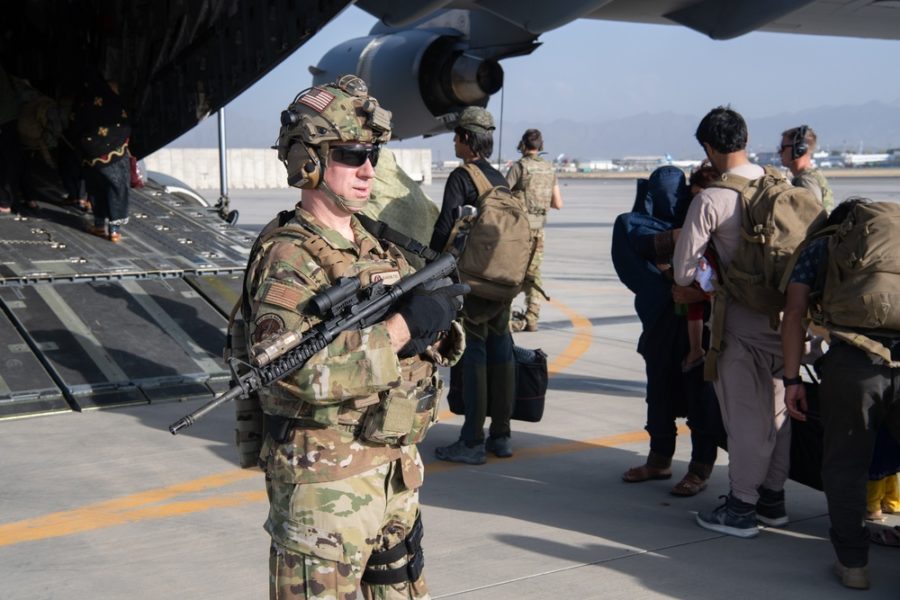U.S. Transportation Command is already conducting an after-action report of the Noncombatant Evacuation Operation that flew more than 124,000 Afghan refugees, third-country nationals, and Americans from Kabul to safety in August to identify lessons learned, said the command’s director of operations, Maj. Gen. Corey J. Martin, who offered a preview to journalists Oct. 7.
“A larger after-action report activity is underway,” Martin promised on a call with the Defense Writers Group.
Martin revealed that he was not satisfied with the processes for TRANSCOM to scale to the demand of the airlift operation from Hamid Karzai International Airport (HKIA) over 17 days in August.
“In the early days of where there was that urgency to go, we realized that we were changing processes,” he said.
Martin said that as director of operations, he wanted a scalable process at his fingertips.
“What I would like to do is just be able to have your, what we call our normal battle rhythm, our normal processes, be able to be scaled to any operation,” he said. “And I did not see that that was the case.”
Martin also said there needs to be less of a focus on the number of aircraft in the operation.
“There’s a feeling sometimes that it’s all about the aircraft and how many aircraft that you can have,” he said.
At the peak of the Afghanistan NEO, TRANSCOM had 60 C-17s focused on the U.S. Central Command area of responsibility. On a typical day such as Oct. 7, about 60 C-17s were on missions around the world. During the NEO, C-5s flew more to keep up with the global missions that C-17s were called away from.
“You have this idea that sometimes aircraft is all it takes to make an operation go,” he said. “I think one of the lessons that started to emerge early is that it’s more than just aircraft—you need places to put the aircraft.”
At one point in the operation, flights out of HKIA were paused for several hours until intermediate locations could flow people out and open capacity.
Martin described the concept of “nodes,” including basing and overflight access from allies and partners.
“It’s the ability to have the throughput of the flow of personnel,” he said. “Early on, we knew there had to be more places as we extracted people from HKIA at the greatest velocity possible because of the timeline and because of the threat—you then needed to have enough places to put them as they flow through the system back to the United States.”
Martin also previewed an information technology lesson learned, but he emphasized that it did not affect the operational capacity of the airlift.
“This operation would speak to the utility of a joint all-domain command and control system that has more wide sensors and a greater sharing of information,” he said. “There was time still spent on point-to-point communications to discuss individual data points.”
A joint all-domain command and control system, he said, would involve “authoritative data that is shared more quickly at different echelons.”
“It highlights, I think, areas that if we were going to take an operation like this, scale it to a larger exercise, you would want to have that type of interoperability without human interface needed to accelerate operations,” he said.


